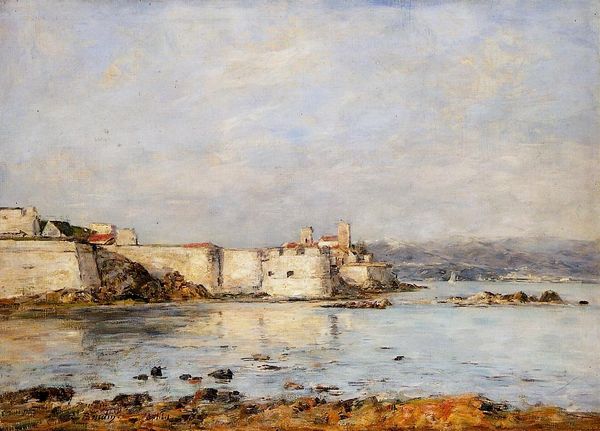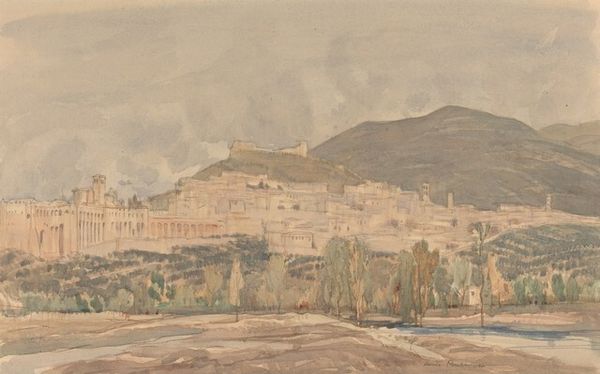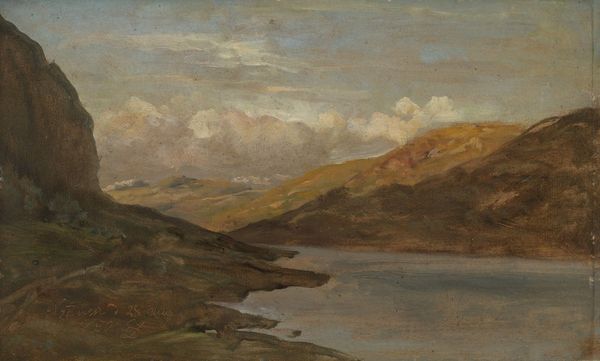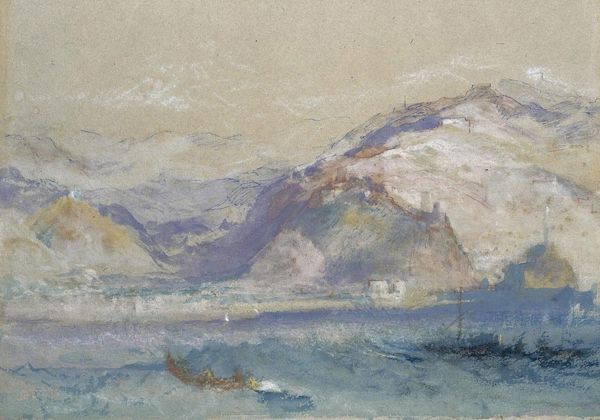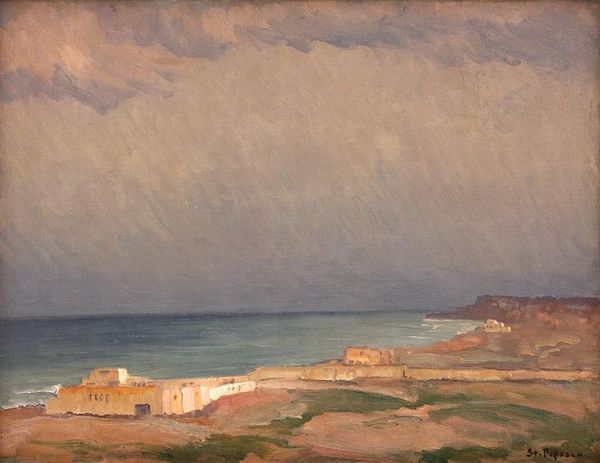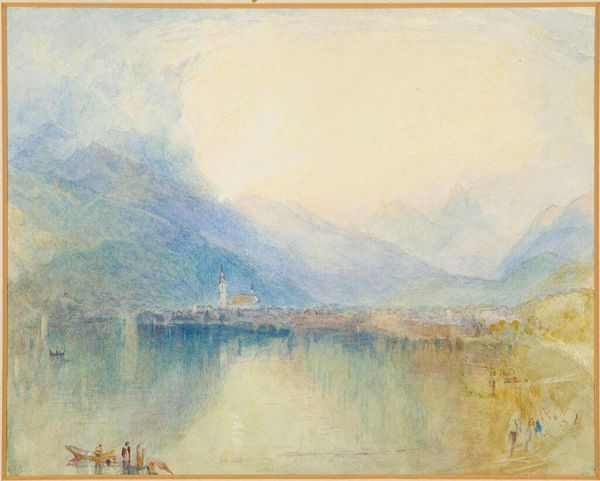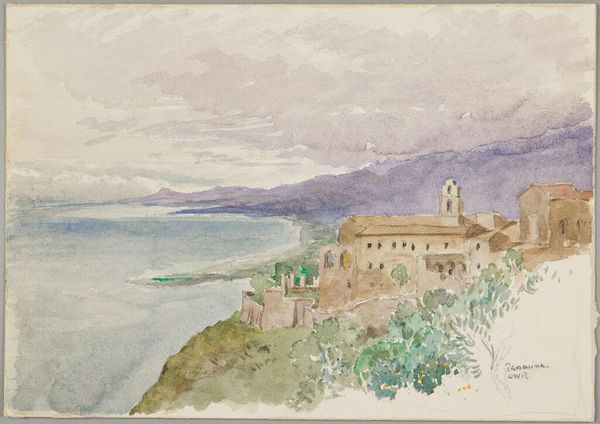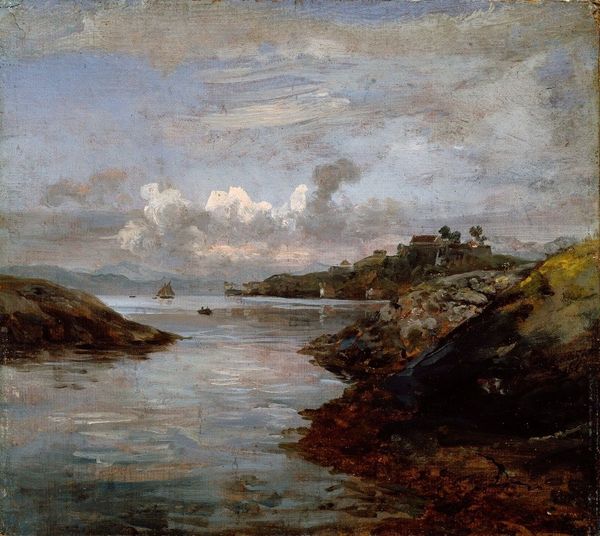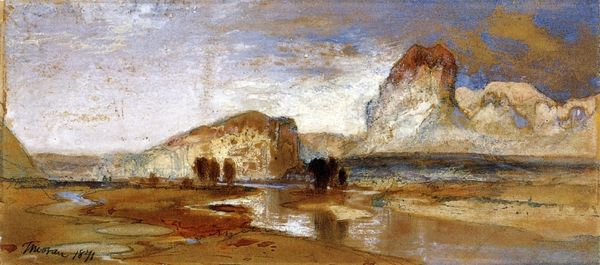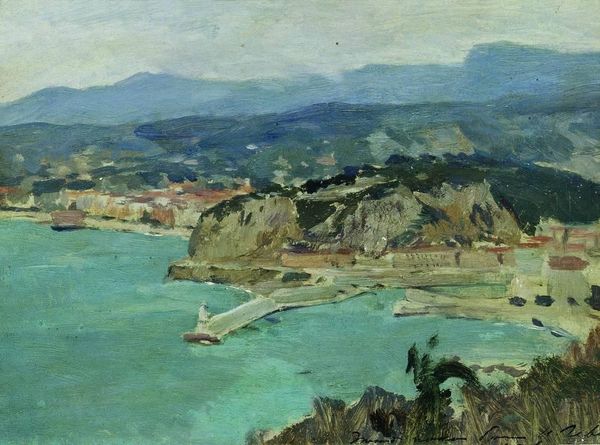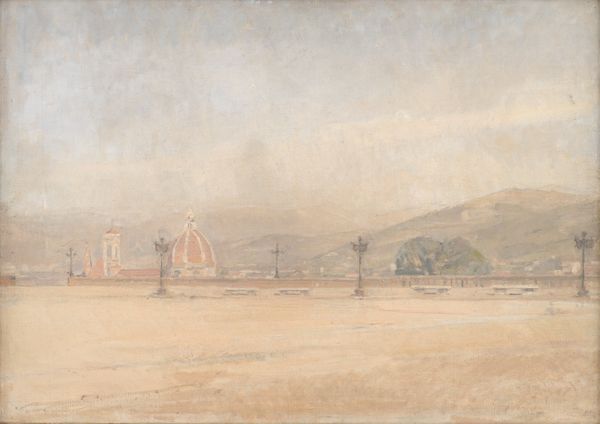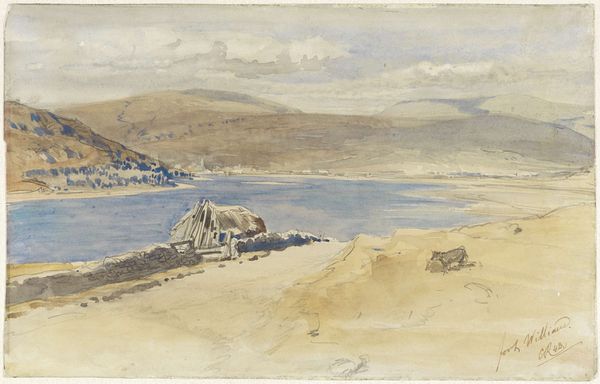
Copyright: Samuel Mutzner,Fair Use
Editor: So, this is Samuel Mutzner's "Balcic Gulf," painted in 1939. It's an oil painting with a rather subdued, almost melancholic mood. The palette is muted, the brushstrokes are quite visible. How do you interpret this work? Curator: Well, first, consider "Balcic." It was a cultural hub, a symbolic location for Romanian artists. This cityscape becomes more than just a scene; it's imbued with cultural memory, an emotional anchor. Note how the mountains and town are rendered – softened, dreamlike. Editor: I see what you mean. Almost like a memory fading. The architecture feels generalized, not specific. Curator: Precisely. And look at the sky – heavy, pressing down. It lends to this pervasive feeling, wouldn't you agree? Think of the symbolic weight of water. Here, the gulf is placid but its muted blue carries, almost mirrors, the solemn tone of the sky above, creating a sense of containment, perhaps even anxiety, on the cusp of the Second World War. Editor: That’s interesting; it really changes my perception of the painting. It’s no longer just a landscape, it's a commentary. Curator: Indeed. The year, 1939, is significant. Consider what those symbols—the town, the sea, even the colors—might mean to an artist working on the eve of immense upheaval. It's heavy with meaning. Is there a premonition of what is to come? Perhaps this melancholic air represents a collective unconscious sensing impending loss and change. Editor: I never would have picked up on that just by looking at it. I'm glad you pointed it out. Thanks so much! Curator: My pleasure. Always look deeper, beyond the surface. Images often hold echoes of history and culture.
Comments
No comments
Be the first to comment and join the conversation on the ultimate creative platform.
